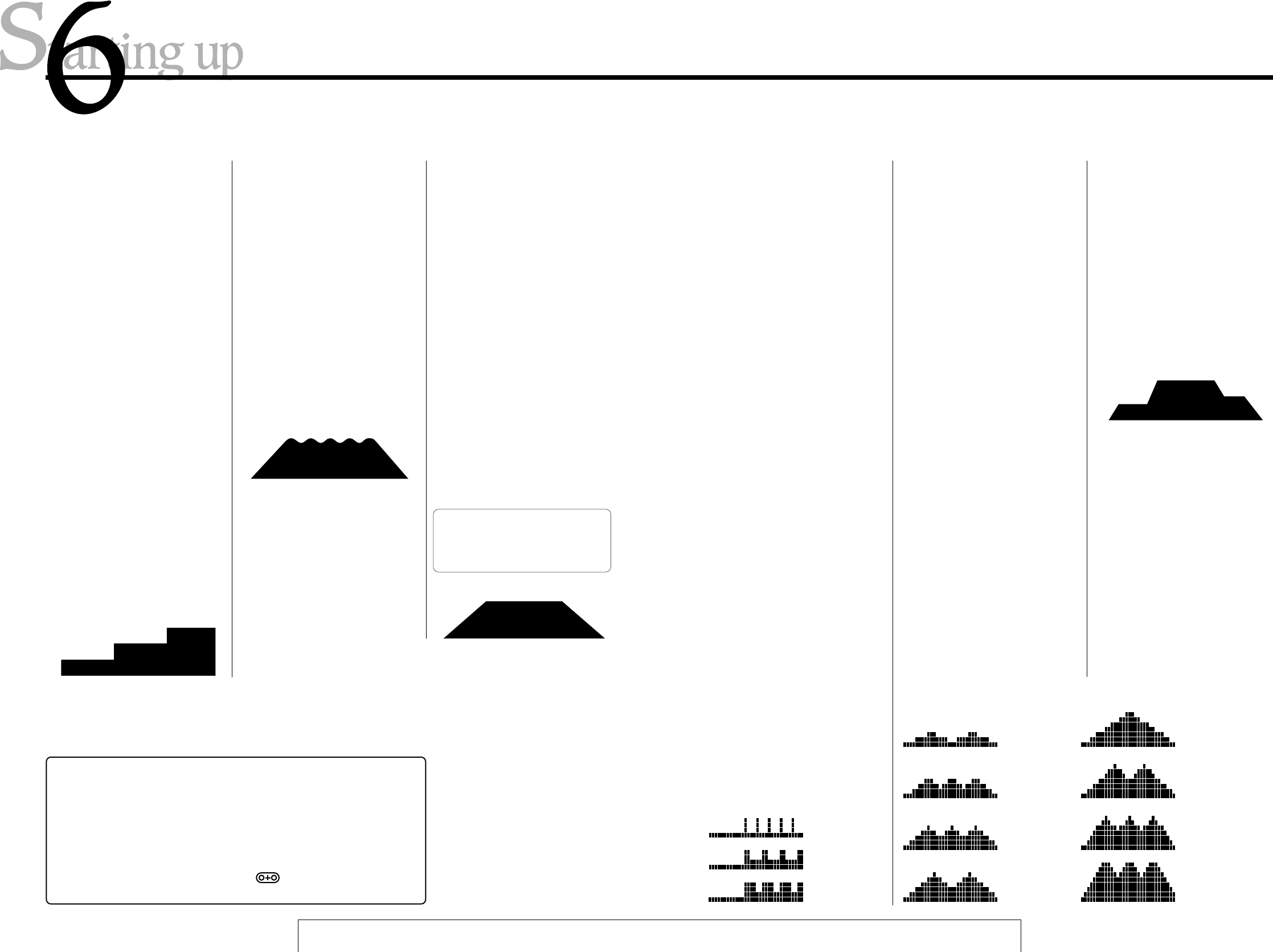
16
PULSE RATE
The six programs of operation
1. Aerobic power
measurement
(physical fitness test)
• Over a period of 10 minutes, you
will encounter three different lev-
els of pedal resistance. Your pulse
will change in response to the dif-
ferent levels of resistance, and this
change in pulse will be used to cal-
culate your overall fitness level,
also expressed is MOU (VO
2
max). MOU stands for maximum
oxygen uptake. The higher your
overall fitness level, the greater
your endurance.
• Your MOU value is compared
with the MOU values of other
people who are the same age and
sex as you. You are given a physi-
cal strength number from 1 to 5
depending on how you rank.
• These results should give you a
good idea of your own fitness level
and help you to determine what
sort of training program will be
the most effective for you. For in-
formation on how to choose a
training program, refer to "Your
strength level and training index"
on page 22~25 in the Operation
section on this booklet.
2. Automatic training
(training at a constant pulse rate)
• You set the pulse rate at which
you want to exercise and the
Model EC-1600 automatically ad-
justs pedal resistance to maintain
that pulse rate. This is an ideal ba-
sic form of aerobic training.
• As you repeat the exercise at a
certain pulse rate and make
progress in your fitness level, you
will be able to create a greater
work intensity under the same
pulse rate. Further, you will be
able to try exercising at a higher
target pulse rate.
3. Isopower training
(training at a constant
energy expenditure)
• The work rate or the figure for en-
ergy expenditure (watts) shown
on the screen of the Model EC-
1600 is calculated from pedal re-
sistance (kg·m) and cadence
(rpm).
• In isopower training, you set the
desired work intensity in watts.
The Model EC-1600 automati-
cally adjusts the pedal resistance
(kg·m) depending on your pedal
cadence (rpm), so as to keep a
constant work rate in watts.
• This type of training is also called
constant load, and is often used in
cardio-vascular rehabilitation.
Control range:
cadence: ----- 40~100 rpm
wattage: ------ 25~200 watts
Note: If you set your target watt-
age as under 50 watts, control
limit of cadence (rpm) be-
comes under 100 rpm.
TORQUE
Upper Pulse Limit Alarm
• For your safety, the upper pulse limit alarm is provided in all the pro-
grams of the EC-1600. If your pulse rate exceeds this limit, the buzzer
beeps and the pedal resistance automatically drops to the minimum of
0.5 kg·m.
• If this alarm is activated, the program is suspended at that point and en-
ters the cool down phase, except in "Manual training" program in which
you can continue the exercise using button to set the desired
torque again.
WORK RATE
17
4. Interval training
(exercise + relief periods)
• By switching back and forth be-
tween exercise and relief periods
of varying length, interval training
gives you the kind of program that
professionals use to build their
stamina and energy.
• On the model EC-1600, 3 patterns of
interval training programs are preset
for developing dashing power, speed,
or your stamina respectively, PLUS
one customized pattern for you to in-
put your personal program.
TLD-1: dash strength training
(sprint power)
15 seconds exercise fol-
lowed by a 45 second relief.
TLD-2: speed training
(anaerobic power)
30 seconds of exercise fol-
lowed by a 60 second relief.
TLD-3: stamina training
(aerobic power)
60 seconds of exercise fol-
lowed by a 30 second relief.
TLD-4: customized pattern
• Choose one of the above patterns, and
adjust the level of intensity by specify-
ing pedal resistance (torque: kg·m).
• During the exercise period (increased
load portion of interval), you should
pedal with your greatest effort, then
you should pedal slower and lighter
during relief period (lower load por-
tion of interval).
• In the TLD-3 stamina training pro-
gram, it is advisable to pedal fast
enough in the exercise period to
keep your pulse rate at 60~80% of
the maximum pulse rate for your
age. (Refer to page 22~23)
• By choosing TLD-4 customized pat-
tern, you can write in your original pat-
tern as desired. (See pages 40 and 41.)
6. Manual training
(training at any desired
pedal resistance)
• You choose the pedal resistance
(torque: kg·m), and it stays con-
stant regardless of your pulse rate
or pedal cadence. This is the most
traditional way in which station-
ary bicycles have been used.
Torque setting range:
0.5~4.0 kg·m
Minimum graduation:
0.1 kg·m
5. Hill profile training
( training by cycling up
mountains )
• Pedal resistance changes over
time to simulate the effect of cy-
cling in the mountains. All
changes in pedal resistance are
shown on the screen.
• The following eight types of
mountain profiles plus one cus-
tomized pattern are programmed.
PRF-1: the Apennines (Italy)
PRF-2: the Apparachian
(U.S.A.)
PRF-3: the Cascades (U.S.A.)
PRF-4: the Pyrenees
(France, Spain)
PRF-5: Mount Fuji (Japan)
PRF-6: the Rockies (U.S.A.)
PRF-7: the Alps (Switzerland)
PRF-8: the Himalayas (Nepal)
PRF-9: customized pattern
• The mountain profiles from 1 to 8
are arranged in order of ascending
difficulty. Do not strain yourself,
but rather enjoy the form of each
mountain.
• Selecting PRF-9 customized pat-
tern, you can create and input
your original hill profile. (Also re-
fer to pages 40 and 41.)
• Minimum training time is 16 min-
utes. If you set a longer training
time, the mountain profiles will be
stretched out horizontally.
PRF-1:
the Apennines
PRF-2:
the Apparachian
PRF-3:
the Cascades
PRF-4:
the Pyrenees
PRF-5:
Mount Fuji
PRF-6:
the Rockies
PRF-7:
the Alps
PRF-8:
the Himalayas
TLD-1:
dash strength training
TLD-2:
speed training
TLD-3:
stamina training
TORQUE


















